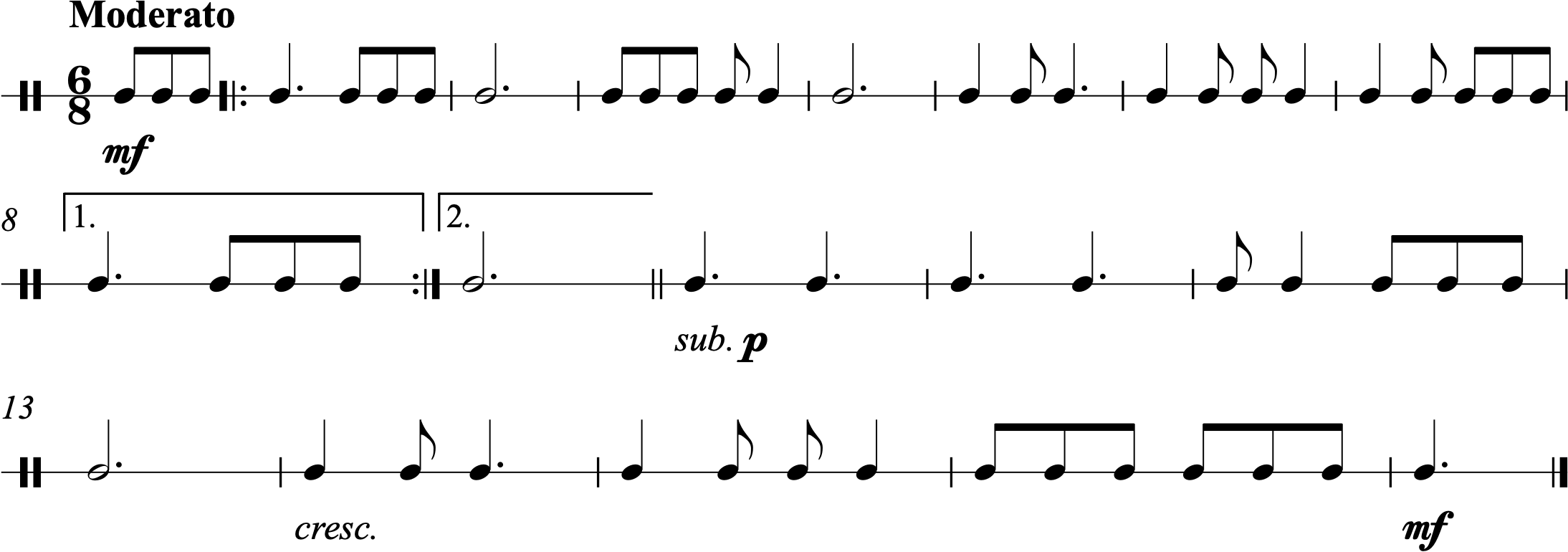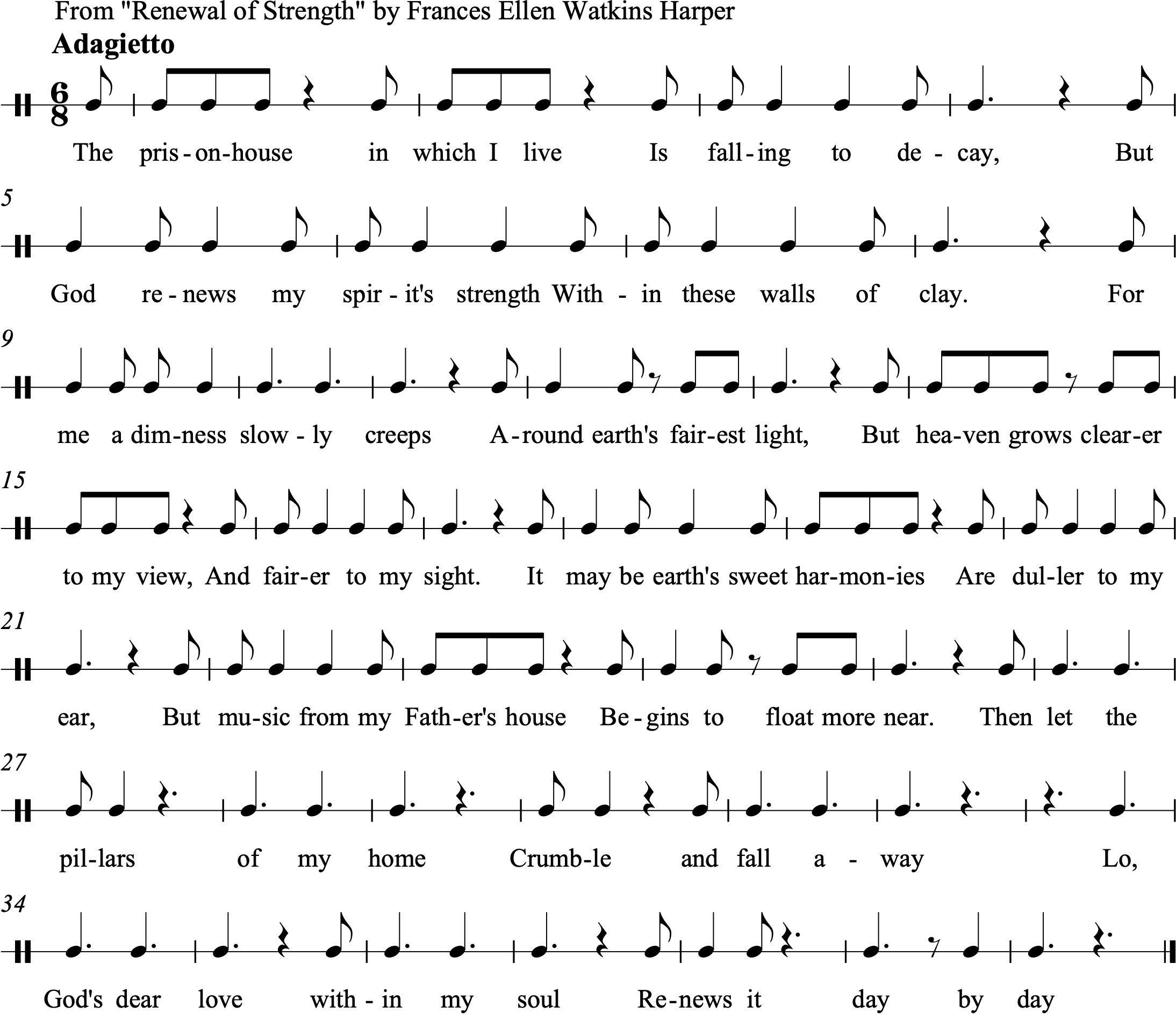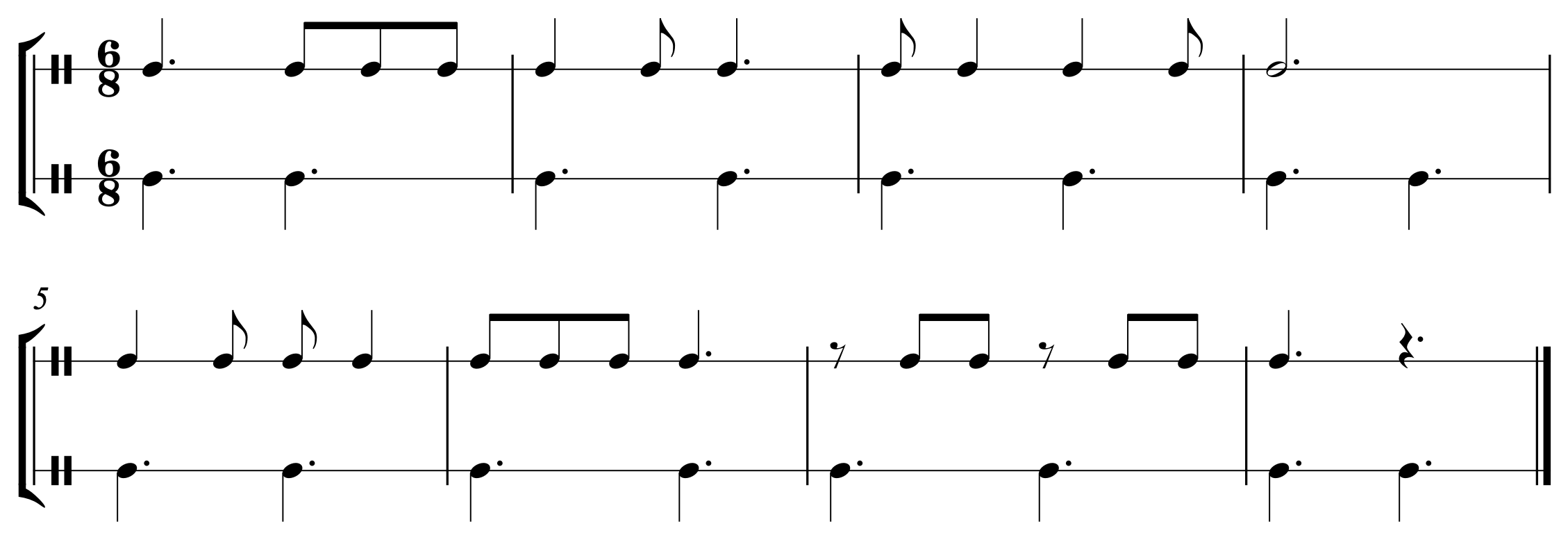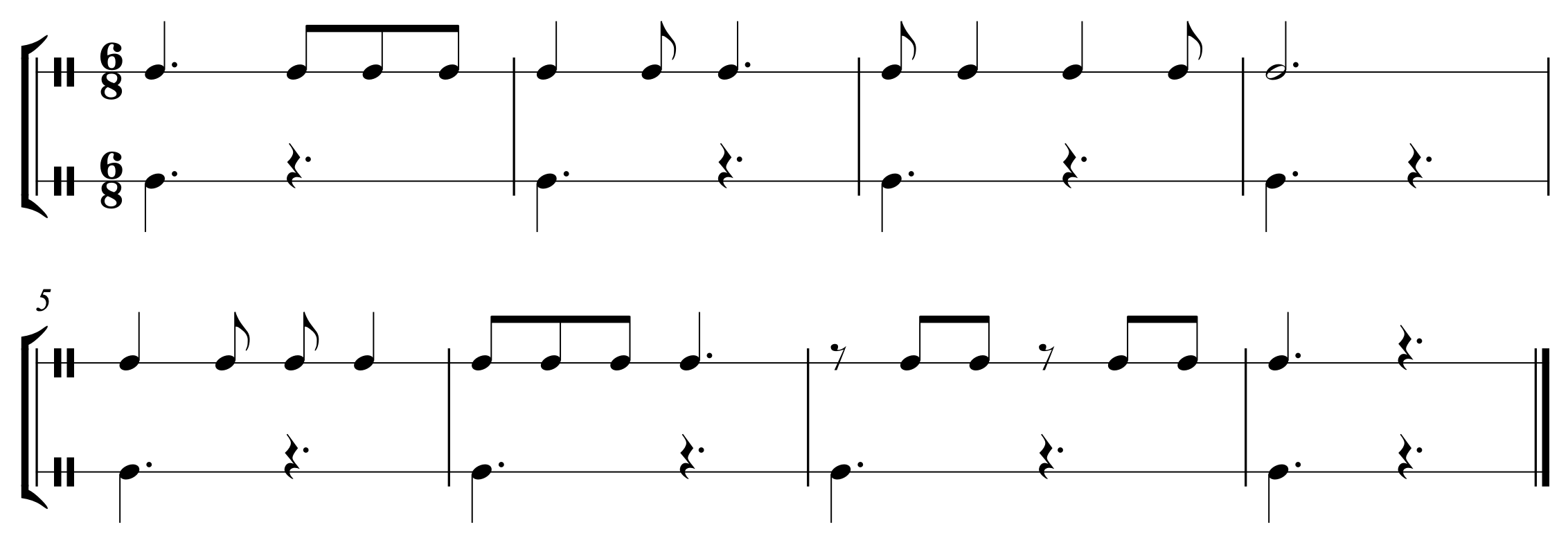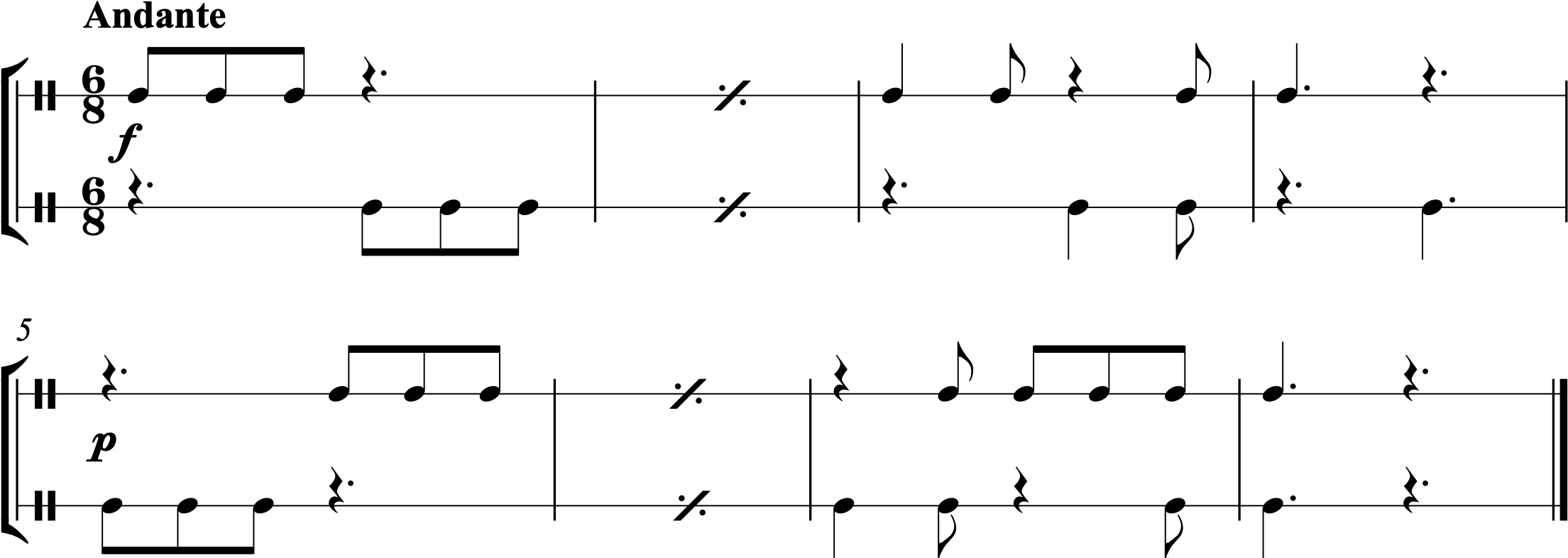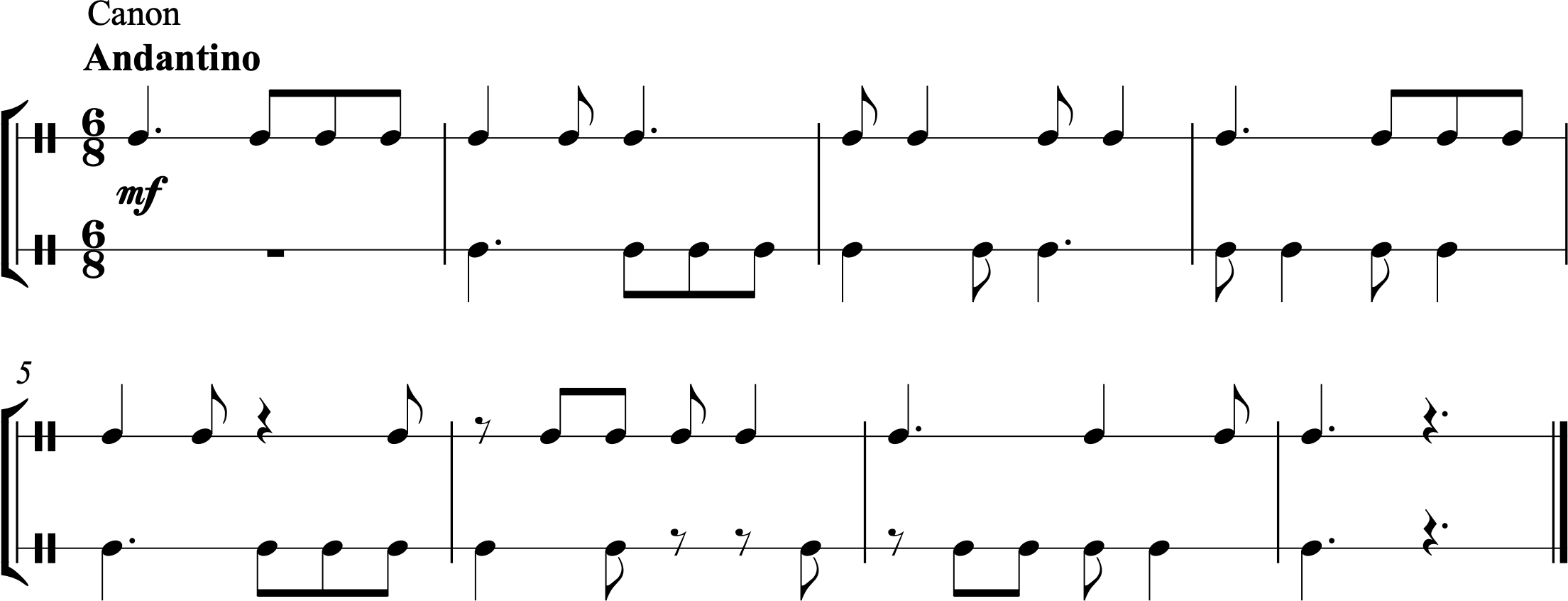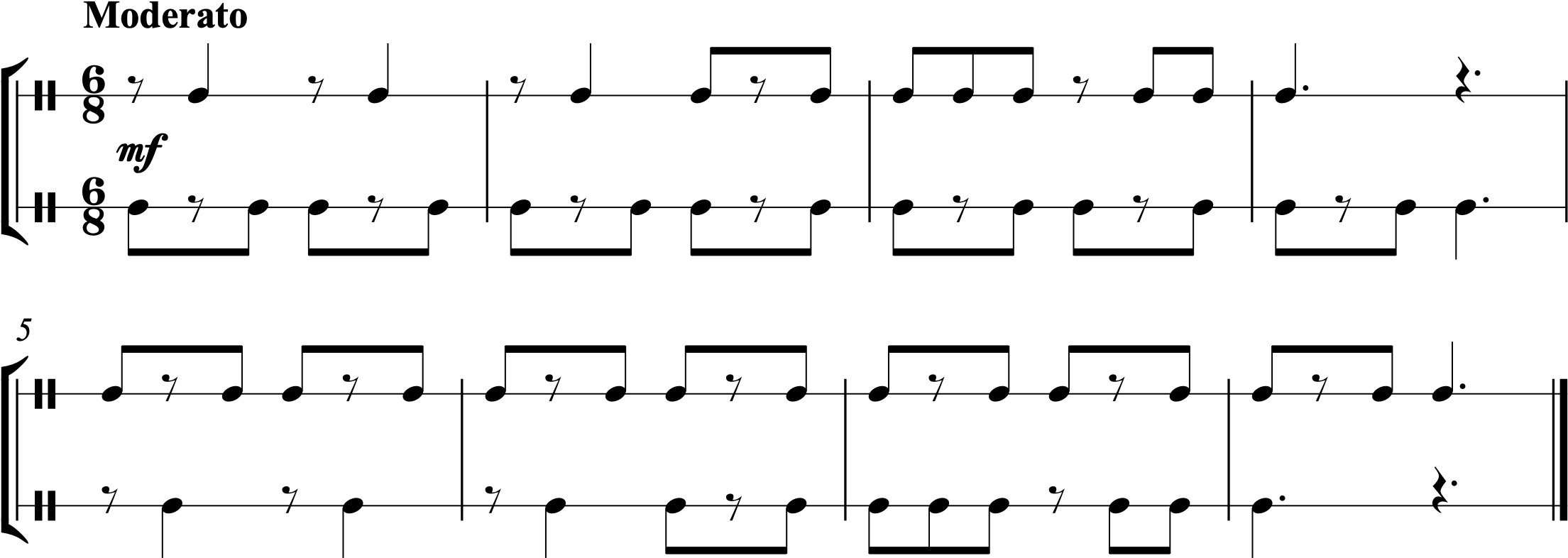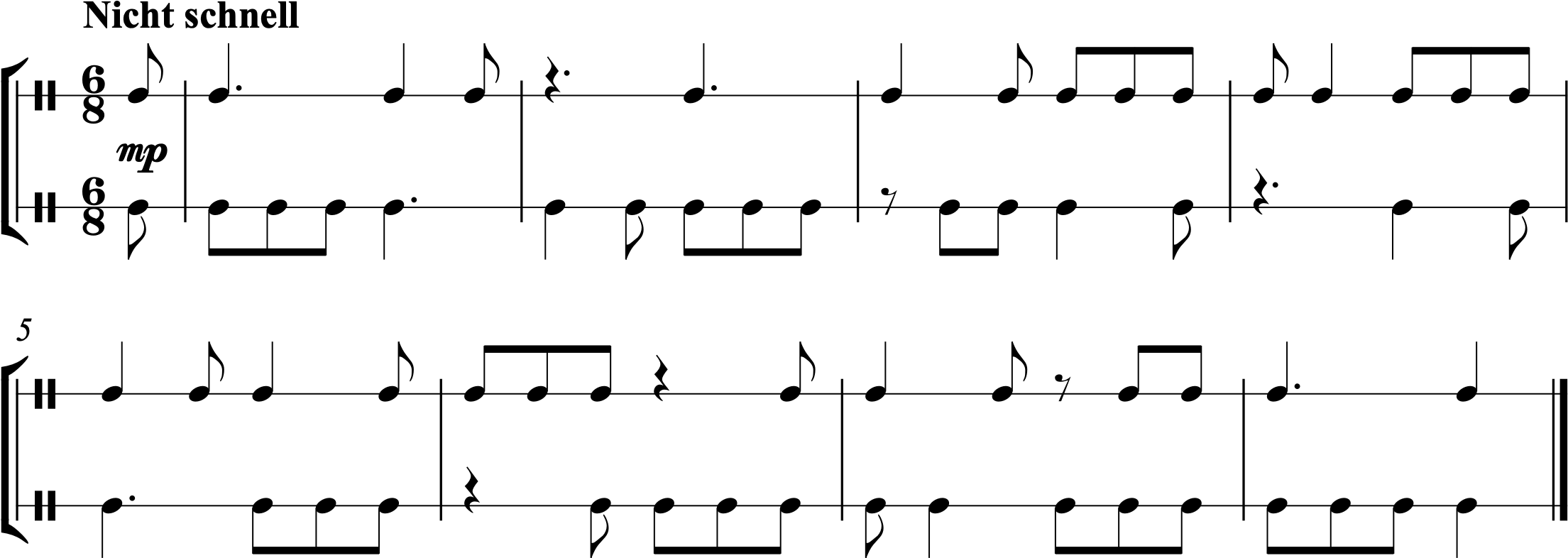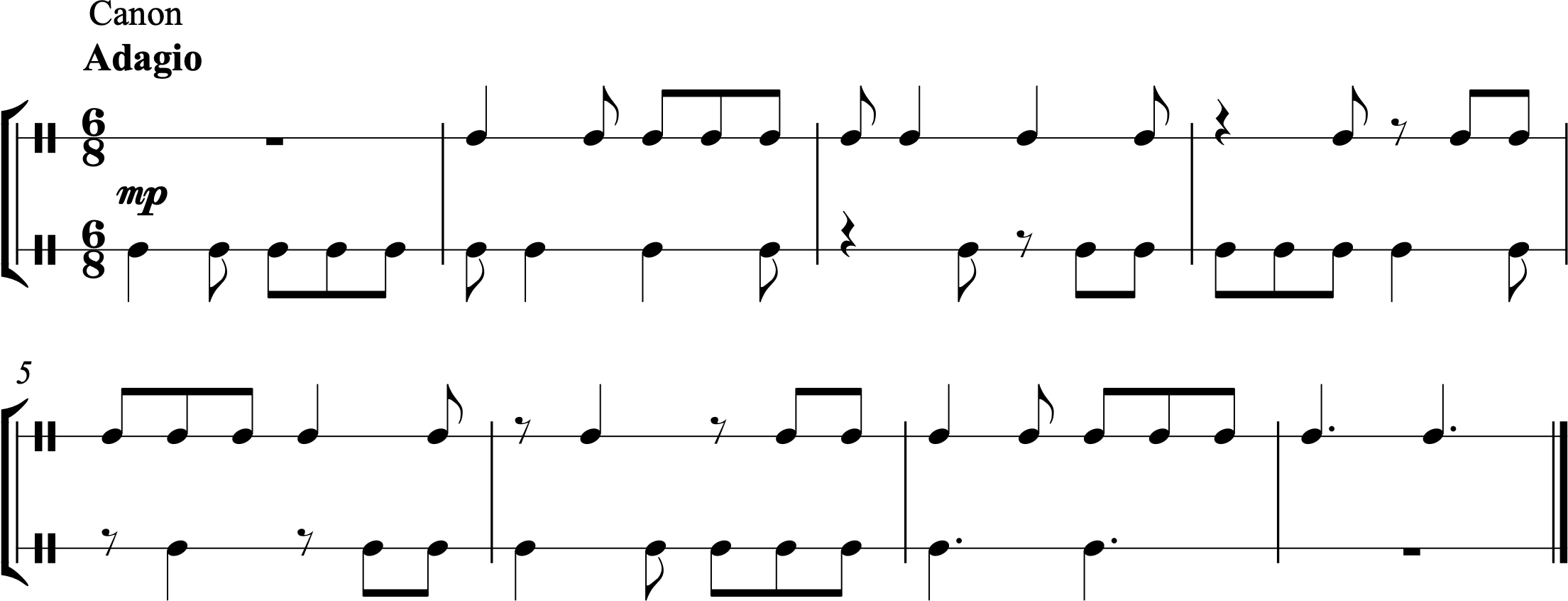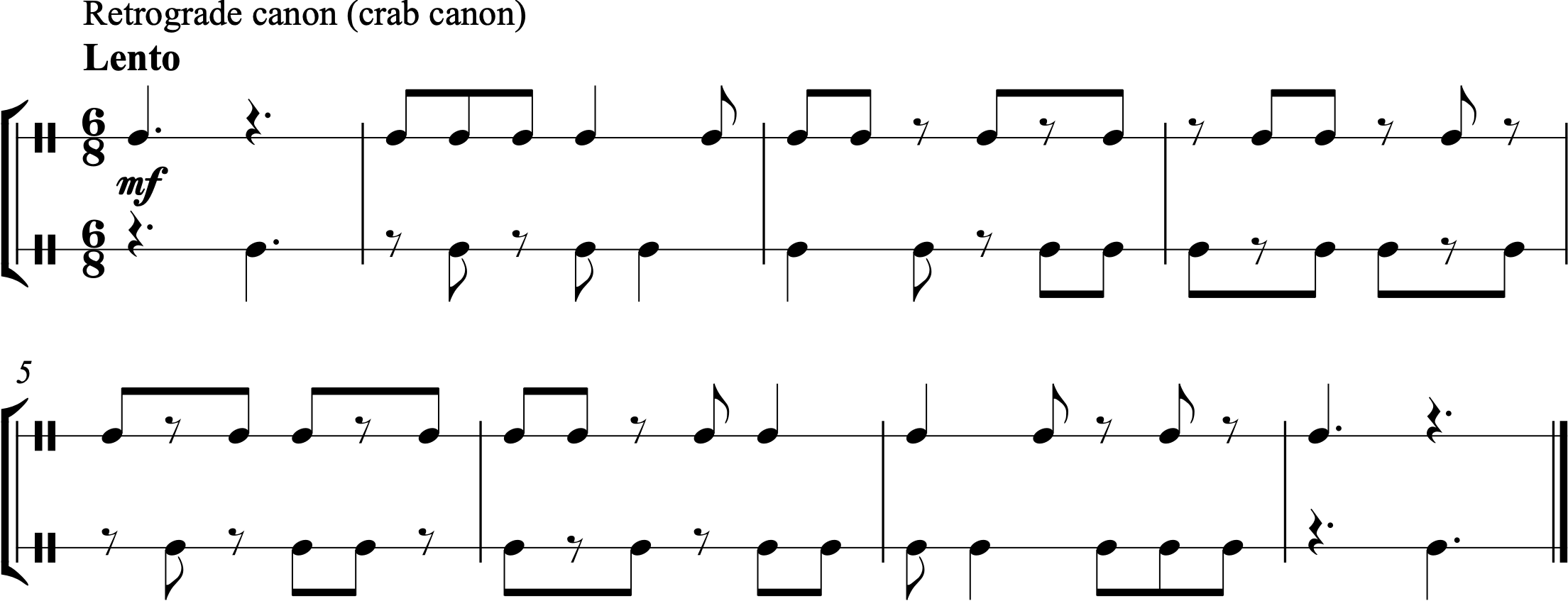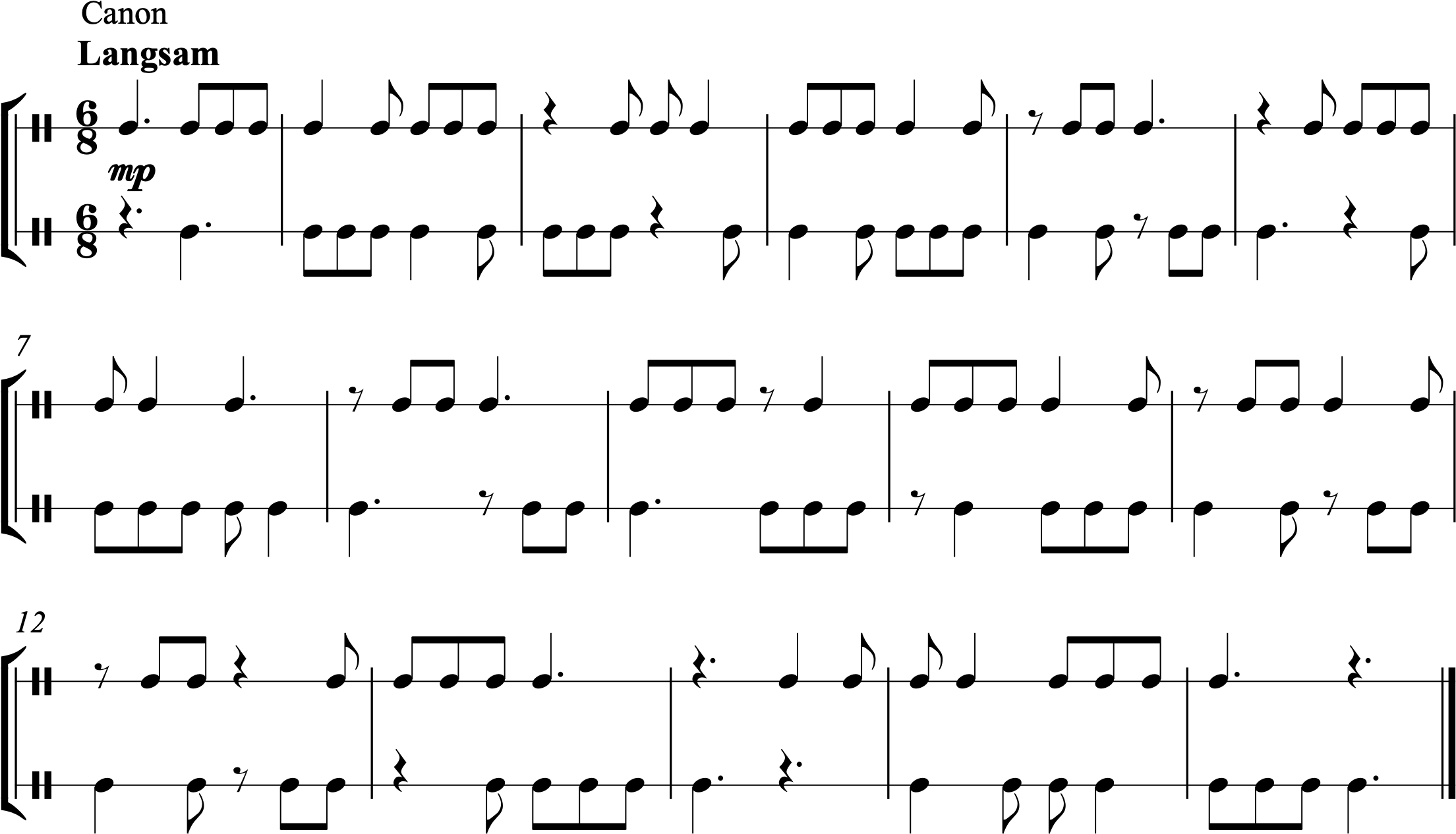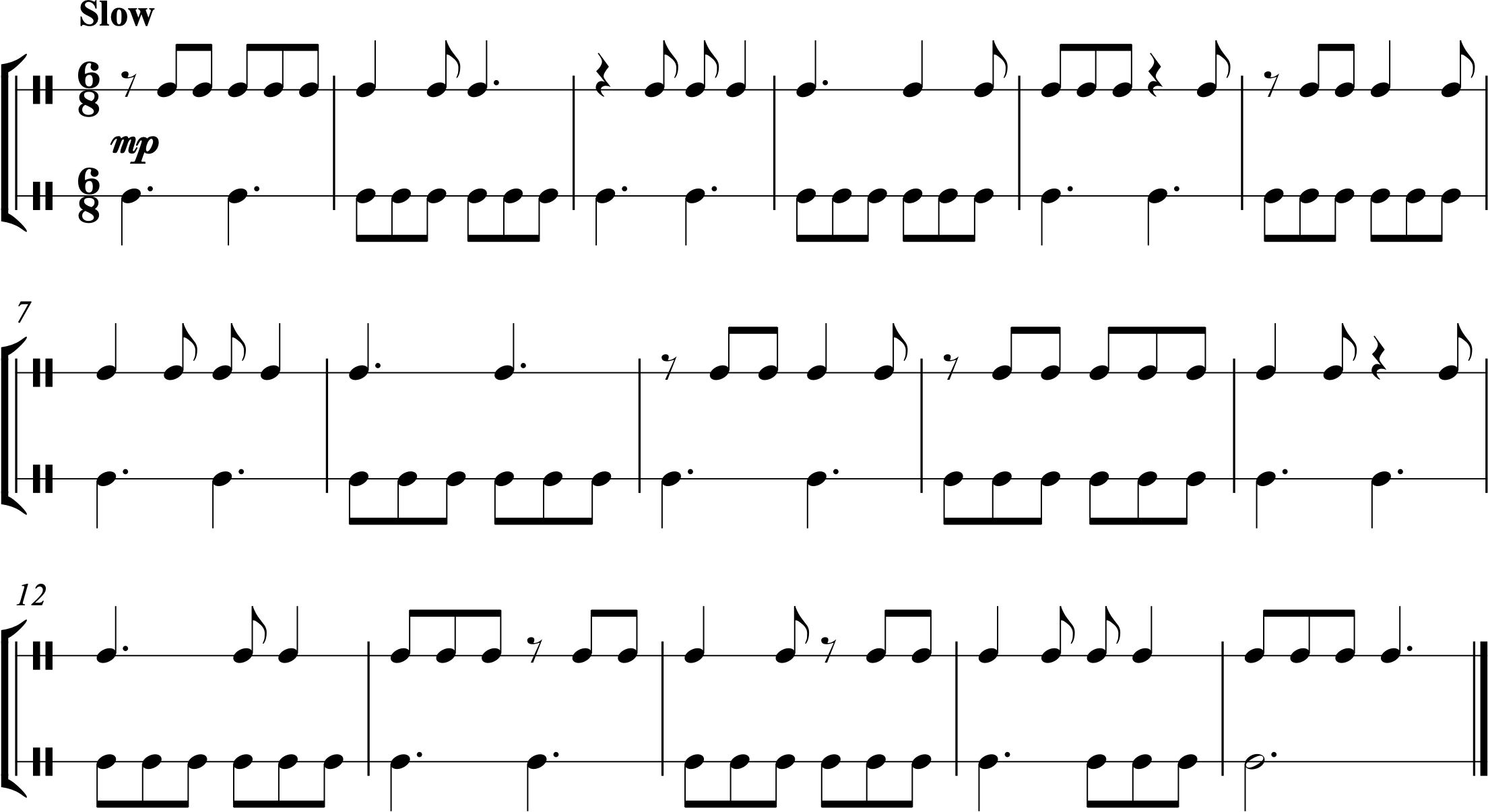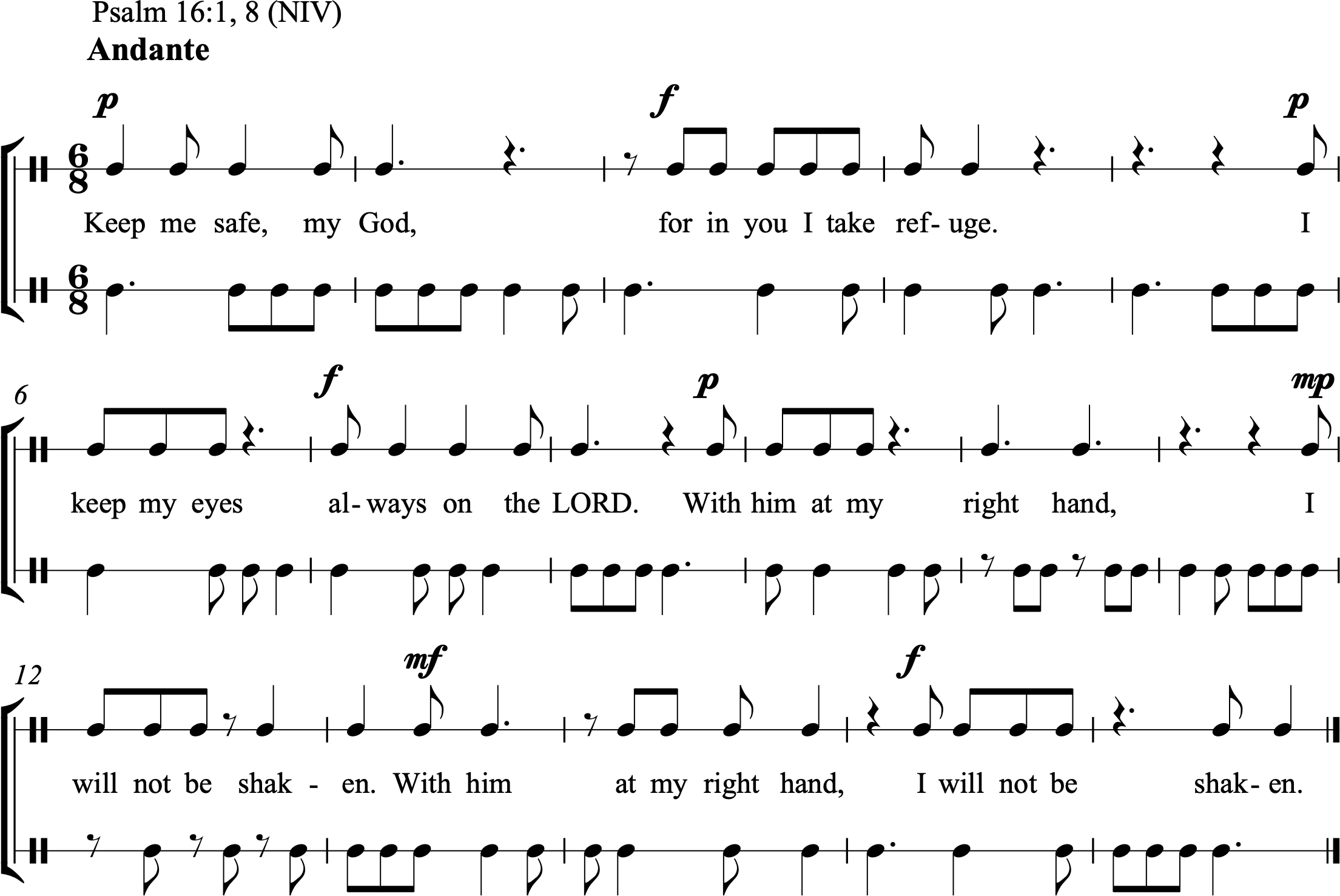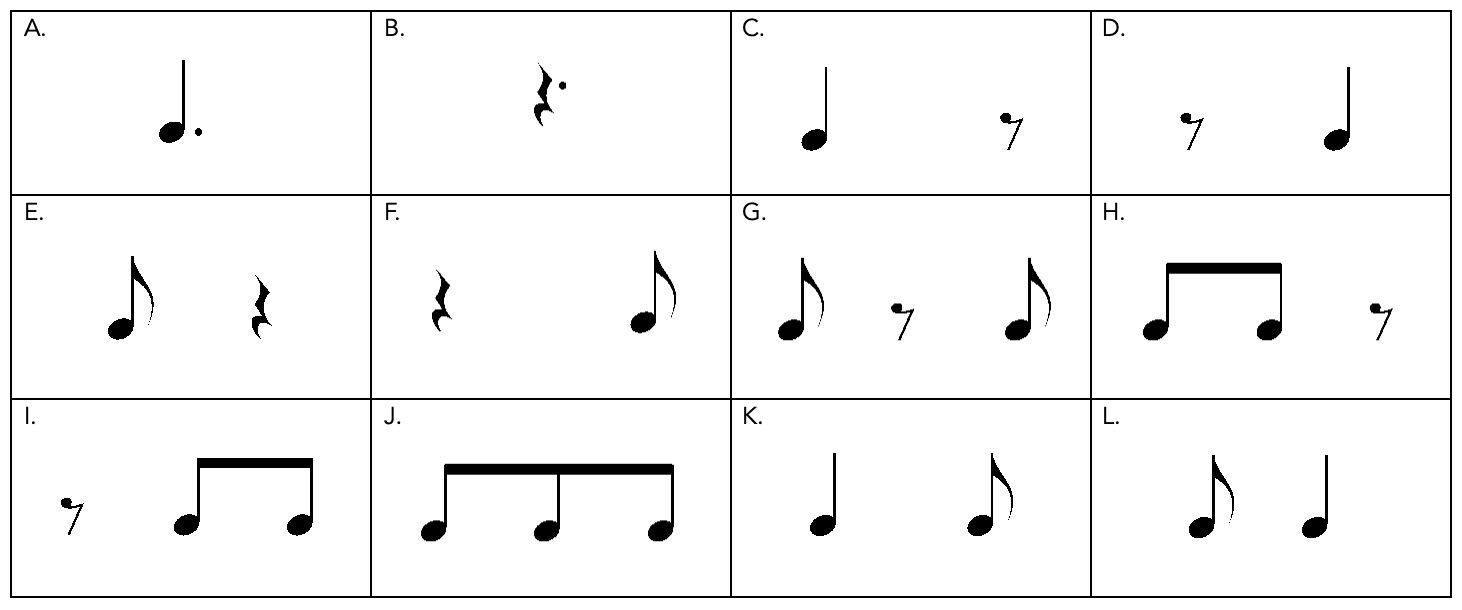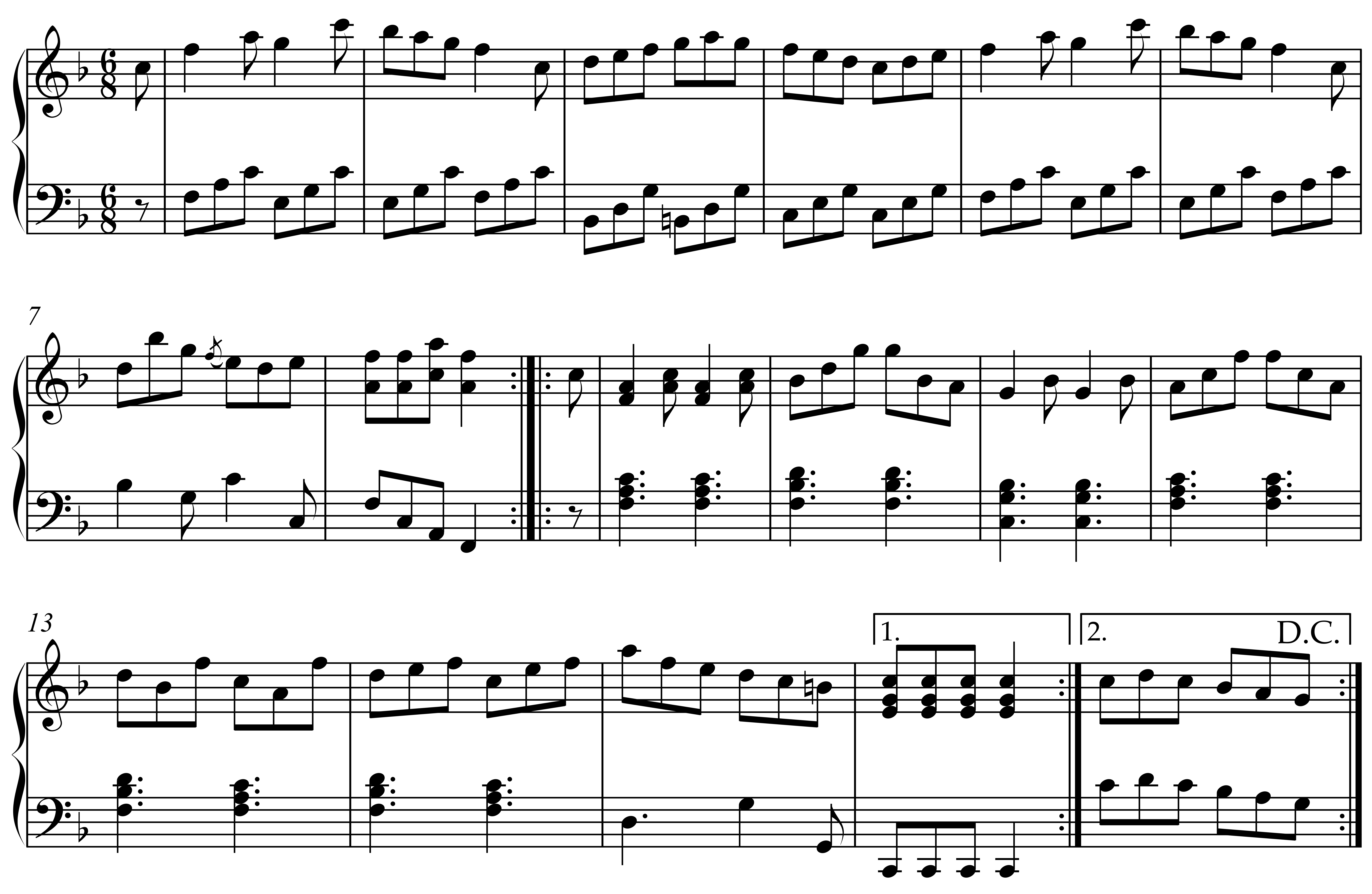Chapter 2: Introduction to Compound Meter
About This Chapter
About This Chapter: In this chapter, we will encounter compound meters for the first time. A compound meter is a meter in which the beat typically divides into three equal parts (in contrast to the simple meters we saw in Chapter 1, in which the beat typically divides into two equal parts). In this chapter, we’ll focus on 6/8—a compound duple meter. In later chapters, we’ll see other types of compound meters, like 9/8 (compound triple) and 12/8 (compound quadruple).
Rhythmic Syllables: As we discovered in Chapter 1, in simple meter, we use “1 & 2 &” to speak a 2/4 measure of eighth notes. Compound meters require some new syllables. We’ll still speak numbers on the beats (“1 2”), but for the divisions of the beat, we’ll speak “la” and “li” (pronounced “lee”). So a measure of 6/8 with all eighth note attacks—as seen in the example below—would be performed “1 la li 2 la li.”
Section A—Introduction to dotted half notes, dotted quarter notes, quarter notes, and eighth notes
Practice
Practice A:
 Practice by performing along with this audio file, which features a metronome click and the notated rhythm. You will hear two measures of wood block to establish the tempo before the exercise begins.
Practice by performing along with this audio file, which features a metronome click and the notated rhythm. You will hear two measures of wood block to establish the tempo before the exercise begins.
Next, try performing along with this audio file, which features the notated rhythm but no metronome click. You will hear two measures of wood block to establish the tempo before the exercise begins.
1.
2.
3.
4.
5.
6.
7.
8.
9.
10.
11.
12.
Section B—Introduction to rests
Practice
Practice B:
 Practice by performing along with this audio file, which features a metronome click and the notated rhythm. You will hear two measures of wood block to establish the tempo before the exercise begins.
Practice by performing along with this audio file, which features a metronome click and the notated rhythm. You will hear two measures of wood block to establish the tempo before the exercise begins.
Next, try performing along with this audio file, which features the notated rhythm but no metronome click. You will hear two measures of wood block to establish the tempo before the exercise begins.
13.
14.
15.
16.
17.
18.
19.
20.
21.
22.
23.
24.
25.
26.
Section C—Two-part rhythms featuring dotted half notes, dotted quarter notes, quarter notes, eighth notes, and rests
Demonstration
Practice
For these practice exercises, take the same three left-hand patterns from Demonstrations C1–C3 (“1 2,” “1 rest,” and “rest 2”) and put them with each of the notated single-line rhythms below.
Practice C1:
Practice by performing along with this audio file. You will hear two measures of wood block to establish the tempo before the exercise begins.
Lower part attacks on beats 1 & 2:
Lower part attacks on beat 1:
Lower part attacks on beat 2:
Practice C2:
Practice by performing along with this audio file. You will hear two measures of wood block to establish the tempo before the exercise begins.
Practice C3:
Practice by performing along with this audio file. You will hear two measures of wood block to establish the tempo before the exercise begins.
27.
28.
29.
30.
31.
32.
33.
34.
35.
36.
Rhythmic Cells
- For general suggestions on how to use these rhythmic cells, see Appendix: How to Use Rhythmic Cells.
Rhythm in Context
In “Fort Erie,” the tenth movement from his 1818 work, A Collection of New Cotillions, Francis Johnson uses many of the compound meter rhythms introduced in Chapter 2—dotted quarter notes, quarter notes, and eighth notes. You can hear the piece in the YouTube video below. Underneath that, you can see the score for the piece. As you listen, try performing along in one or more of the following ways:
- Speak the rhythm for the top line on rhythmic syllables
- Speak the rhythm for the bottom line on rhythmic syllables
- Speak one line and tap or clap the other
- Tap both lines
Citations
Poem:
- Frances Ellen Watkins Harper (1825–1922), “Renewal of Strength”, public domain. From Poems, copyright 1895, published 1900, George B. Ferguson Co., Philadelphia, PA.
Psalm:
- Scriptures marked “NIV” taken from the Holy Bible, New International VersionTM, NIVTM
- Copyright © 1973, 1978, 1984, 2011 by Biblica, Inc. Used with permission. All rights reserved worldwide. The “New International Version” is a trademark registered in the European Union Intellectual Property Office (EUIPO) and United States Patent and Trademark Office by Biblica, Inc. The “NIV”, “Biblica”, “International Bible Society” and the Biblica Logo are trademarks registered in the United States Patent and Trademark Office by Biblica, Inc. Used with permission.
Rhythm in Context:
- Francis Johnson (1792–1844), “Fort Erie” from A Collection of New Cotillions (1818).













